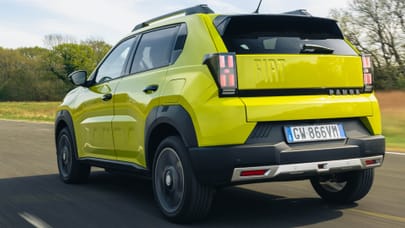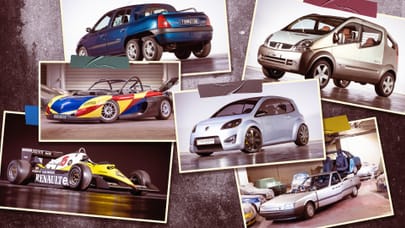

Virgin Galactic's test pilot is called Mike ‘Sooch' Masucci (pictured). He's racked up more than 9000 hours in the air, graduated from the US Air Force's pilot training academy in 1986 - think Top Gun - and has flown more than 70 different aircraft, including the U-2, the F-16, and the T-38. Sooch is Tom Wolfe's ‘right stuff' personified.
The CEO is George Whitesides, who has the unflappable air of one of those White House aides who were forever popping up in The West Wing or 24. You'd be happy if George was looking after things for you. No wonder: he used to be NASA's Chief of Staff.
Vice President of Operations is Mike Moses. He ran the last 12 Space Shuttle missions NASA conducted, before the programme was mothballed. He'd be a good man to go to the pub with.
TopGear.com caught up with them as they announced the new partnership deal with Land Rover as part of the unveiling of the Discovery Vision concept in New York. Here are 10 things we learned about the world's first commercial spaceline, as the countdown to its inaugural flight at the end of the year gathers pace.Words: Jason Barlow
Advertisement - Page continues below
SpaceShipTwo will carry six passengers and two pilots. Cradled by a mothership plane called WhiteKnightTwo (pictured), it's flown to approximately 50,000ft (15km), before being released. The two craft together weigh 31.7 tonnes.

SpaceShipTwo uses a solid propellant rocket that generates around 70,000lb of thrust. Following its release from WhiteKnightTwo, SS2 drops for about 10 seconds, before the rocket is ignited and she begins the 60-second ascent from 50,000ft to more than 250,000ft. During this time she'll pull around 3g travelling at Mach 3.
Advertisement - Page continues below
Once it's reached its maximum altitude, SS2's passengers will experience weightlessness for four or five minutes.

On re-entry, SS2 drops so fast so quickly that thermal protection for the body isn't such an issue. It'll generate loads of up to 5g for 20 seconds. The Space Shuttle was travelling much faster for far longer, which is why it needed those expensive thermal tiles.

Virgin Galactic is sub-orbital, but the missions should still see SS2 and its occupants reach an altitude anywhere between 80 and 100km above sea level.

SS2's body is predominantly carbon fibre. Clearly intended to be re-useable, SS2 can fly twice a day. Safety and repeatability are critical aspects so every component has been designed to double or triple redundancy levels.
Advertisement - Page continues below
Every trip will be treated as a ‘test flight'. Despite Virgin Galactic's ambition to democratise space travel, there's no such thing as a routine space flight.

More than 700 passengers from 58 countries have so far booked a flight. It costs $250,000, but as the programme develops it should become more affordable, though this is a highly relative term in this context.
Advertisement - Page continues below
The US administration regards ‘space' as technically beginning at an altitude of 80km (262,000ft). That's beyond the stratosphere (approx. 164,000ft), and into the Mesosphere. Beyond that lies the ionosphere, which runs to around 700km. The USAF and NASA reckon you're an astronaut if you've exceeded 264,000ft.

Virgin Galactic won't divulge its investment so far. But NASA is spending $4.5bn on its latest moon shot programme, and the annual Space Shuttle bill at the end of the programme was $3bn.

The last Space Shuttle to fly - Discovery - was designed and rated to complete 100 separate missions. She was retired after 30.
(OK, so that was actually 11 buzz facts, but who's counting?)
Trending this week
- Car Review
Hyundai Kona
- Long Term Review
Time's up with the Mini Countryman: here's the six-month verdict
- Top Gear's Top 9
Nine dreadful bits of 'homeware' made by carmakers







